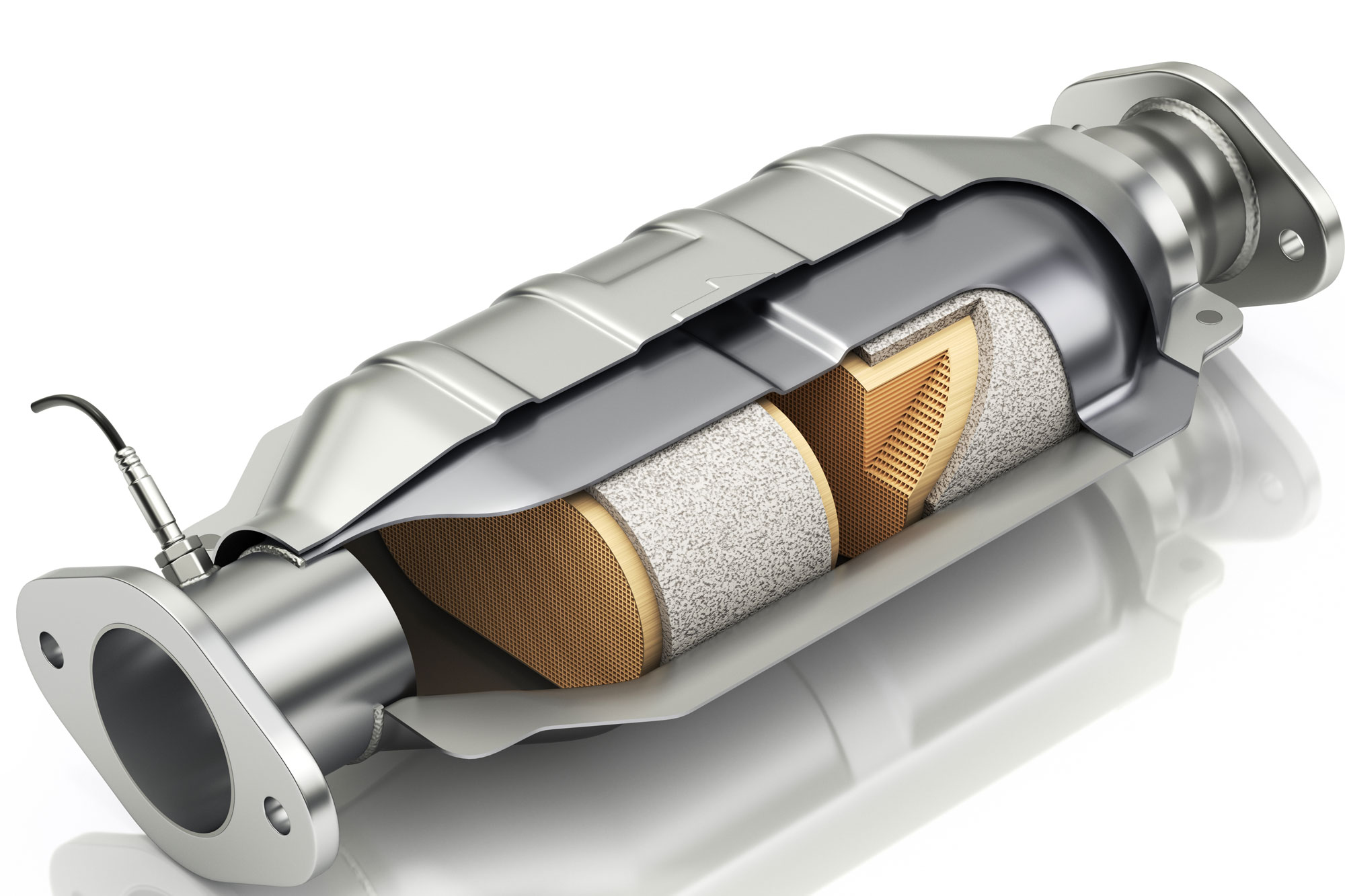What Is a Catalytic Converter?
Learn what this emissions device does and why thieves keep stealing them.
 Shutterstock
Shutterstock
Inside an engine, thousands of tiny explosions happen every minute, and each one produces gases that are harmful to humans and the environment. That's why a catalytic converter is useful.
What Is a Catalytic Converter?
A catalytic converter is a component of your car's emissions system that converts toxic pollutants such as hydrocarbons, nitrogen oxides, and carbon monoxide into less toxic emissions such as water vapor, nitrogen, and carbon dioxide. It achieves this by routing the gases through a series of ceramic honeycomb structures coated with various precious metals. Those elements serve as catalysts to a chemical reaction that neutralizes those noxious emissions.
Catalytic converters vary in length and shape, depending on the vehicle. Some models — those with dual exhausts — have more than one. Because these devices need high heat to operate, they're usually found near the engine, about a third of the way down the exhaust system underneath the vehicle.
Why Do I Need a Catalytic Converter?
The gases produced by internal combustion are not eco-friendly. Hydrocarbons and nitrogen oxides create smog, and carbon monoxide is poisonous to humans and animals. Air pollution got so bad that the U.S. federal government passed the Clean Air Act of 1970 which required automakers to reduce their cars' emissions by 90% within five years. As a result, almost all new cars built from 1975 onward are equipped with a catalytic converter.
Although your car will run without one, removing or tampering with a functional catalytic converter is illegal. If you live in an area that requires smog tests, a car without this necessary component will fail inspection — if not by high emissions alone then by the check-engine alert that will invariably light up on the dashboard.
Why Do People Steal Catalytic Converters?
The three main elements used as catalysts are platinum, palladium, and rhodium — all of which are rare precious metals. In recent years, their values have skyrocketed, making catalytic converters juicy targets for thieves. Platinum, the least rare of the three, hit a high of almost $1,300 per troy ounce in 2021 according to statistics by Trade Economics, an outlet for economic data and forecasts. The following year, palladium topped out at just over $3,000 a troy ounce. But both of those values pale in comparison to rhodium's: In 2021, a single troy ounce commanded nearly $30,000. You won't find that much precious metal in a catalytic converter, but the miniscule amounts that they do contain still have value.
Some metal recyclers will buy used catalytic converters from unscrupulous sources, giving thieves an avenue to sell their ill-gotten goods. State and local governments are cracking down on the illicit catalytic converter trade. California, the state with the highest number of catalytic converter thefts in 2021 according to Sacramento, California news outlet ABC10, passed new legislation that makes it harder for recyclers to buy stolen units and other states are following suit.
Written by humans.
Edited by humans.
 Alex Nishimoto
Alex NishimotoAlex Nishimoto is a Los Angeles-based writer with 15 years experience covering the auto industry. He spent much of his career as an editor on staff at a major automotive magazine, testing cars, writing articles, and assisting on segment-defining comparison tests. When he's not writing about cars, he's wrenching on his E30-generation BMW 325is, which he's owned since college and plans to restore one day.
Related articles
View more related articles